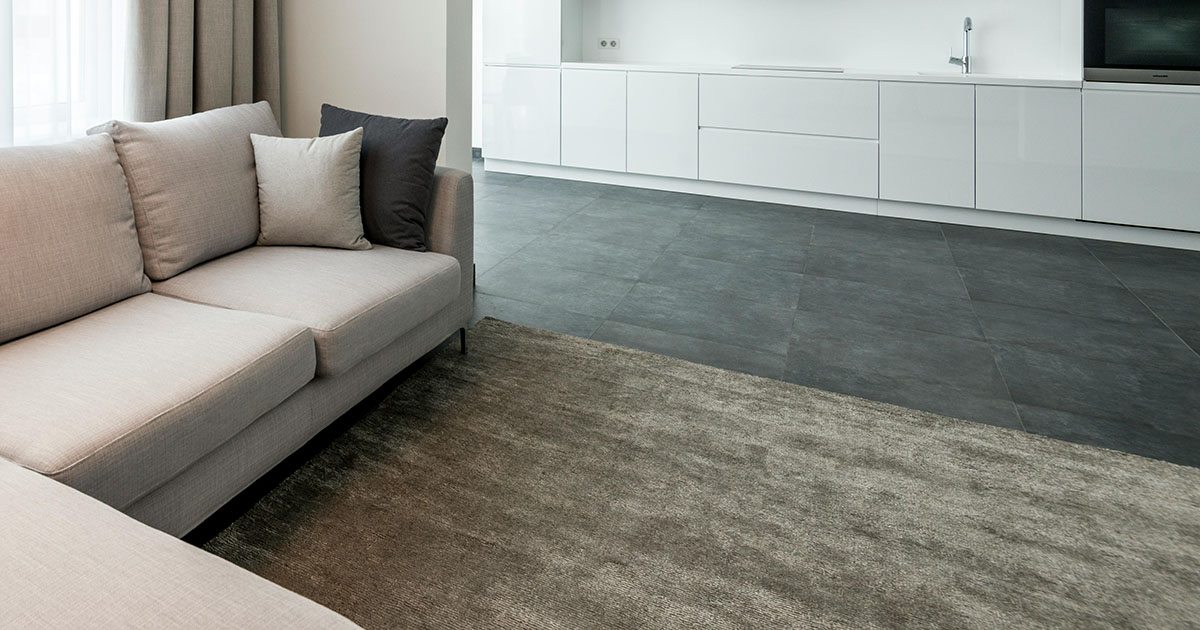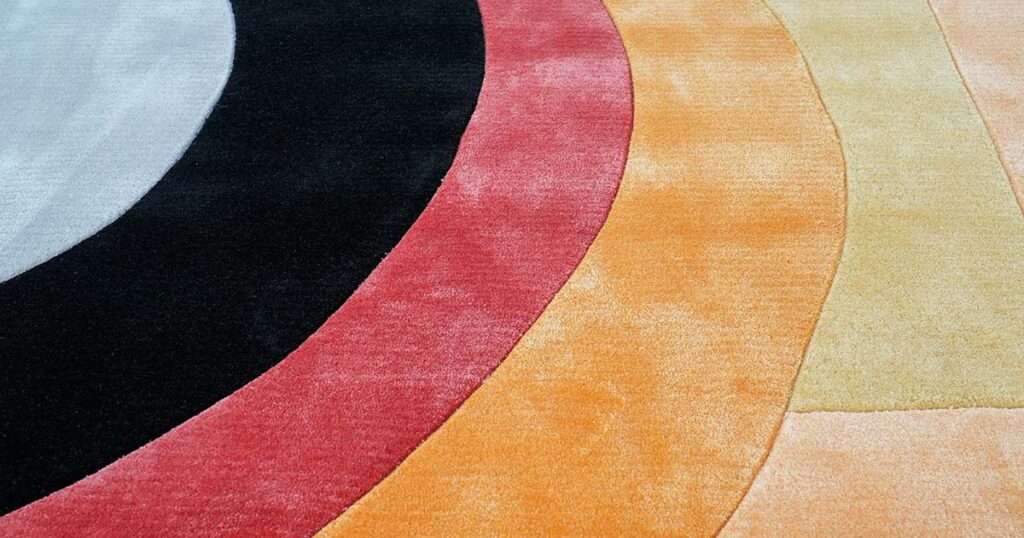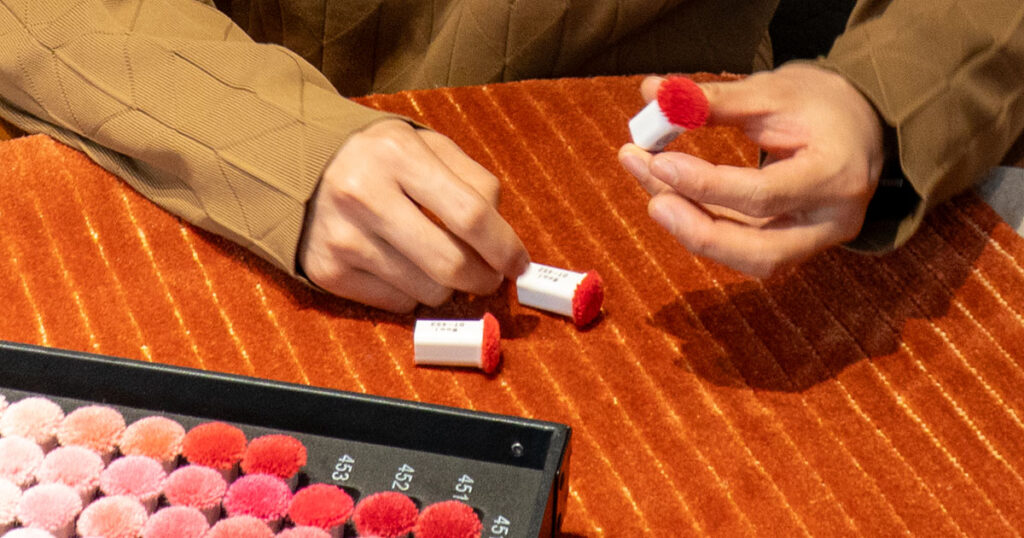Brown rugs offer a perfect blend of practicality and aesthetic appeal for homes and businesses alike.
Their earthy tones create warmth while providing a versatile foundation for various design styles.
This comprehensive guide explores everything you need to know about brown rugs – from shade variations and psychological effects to styling tips and practical applications.
Brown Rug Shades
Brown isn’t just brown – it encompasses a spectrum of shades, each with its own character and impact on your space.
Light Browns and Beiges
These lighter shades create an airy, open feel while adding subtle warmth:
Beige: A very light brown with golden or yellow undertones that feels warm and sunny. Beige rugs brighten spaces while adding a hint of warmth.
Taupe: A sophisticated gray-brown blend that creates an understated, elegant atmosphere. Taupe rugs work wonderfully in refined settings and can appear warmer or cooler depending on their specific undertones.
Tan: A light to medium shade resembling tanned leather or sand, with a soft golden hue. Tan rugs bring a casual, earthy feel to spaces while keeping them light and open.
Medium Browns
These middle-range shades strike a balance between light and dark:
Camel: A medium-light brown with distinctive golden or caramel undertones. Camel-colored rugs add a cozy, organic vibe similar to well-worn leather.
Chocolate Brown: A rich, warm mid-range brown resembling milk chocolate. Chocolate brown rugs create a grounded, cozy foundation that contrasts beautifully with lighter elements.
Dark Browns
Deep, rich browns add sophistication and drama:
Walnut: A deep brown inspired by walnut wood, often with subtle reddish warmth. Walnut-colored rugs bring luxury and coziness to spaces.
Espresso: The darkest brown shade, almost black but with more warmth. Espresso rugs anchor rooms with a strong foundation of color and add dramatic elegance.
The Psychology and Symbolism of Brown
Brown carries strong psychological and emotional associations that influence how we experience spaces.
Emotional Impacts
Brown is inherently grounding, connecting us to natural elements like wood, soil, and stone. This earth connection makes brown spaces feel stable and secure. As a warm neutral, brown creates inviting environments rather than stark ones.
Brown rugs often evoke feelings of:
- Stability and dependability
- Warmth and comfort
- Earthiness and naturalness
- Security and safety
Mood Effects by Shade
Different brown shades create distinct atmospheres:
- Light browns feel open, friendly, and uncomplicated – creating gentle, relaxed spaces
- Medium browns feel warm, organic, and comforting – putting people at ease
- Dark browns convey sophistication, richness, and depth – adding drama and luxury
- Gray-browns create a subdued, modern sophistication
- Reddish browns introduce energy and warmth through their red/orange undertones
Pairing Brown Rugs with Other Elements
One of brown’s greatest strengths is its compatibility with other colors and materials.
Wall Colors
Brown rugs work beautifully with:
- Neutral walls (white, cream, light gray) for a classic, timeless look
- Green walls for a natural, biophilic forest feel
- Blue walls for an earth-meets-sky contrast that feels balanced and serene
- Muted terracotta or mustard walls for a warm, autumnal atmosphere
Furniture
When pairing with furniture, consider contrast and complement:
- For wood furniture, choose a brown rug that’s lighter or darker than your wood tones to prevent blending
- Light-colored furniture (cream, white) creates elegant contrast against chocolate or darker brown rugs
- Colorful furniture (blue, green, red) stands out more vividly against brown’s neutral backdrop
- Gray furniture pairs wonderfully with brown rugs – the brown adds warmth while gray adds modernity
Flooring
Your existing flooring affects brown rug selection:
On hardwood floors, choose a rug a few shades lighter or darker than the floor for definition
On tile or stone floors, brown rugs add visual and physical warmth to break up hard, cold surfaces
On white or gray flooring, brown rugs introduce a natural element that balances artificial-looking surfaces
Accent Colors and Textures
Brown’s neutrality allows for creative accent pairings:
Turquoise and teal accents pop beautifully against rich brown rugs
Mustard yellow and burnt orange cushions create a cozy autumn palette
Metallic accents in gold or brass complement brown’s warmth with added luxury
Varied textures (chunky knits, smooth leather, woven elements) prevent brown schemes from feeling flat
Brown Rugs in Different Design Styles
Brown rugs adapt seamlessly to various interior styles.
Rustic and Farmhouse
Brown rugs feel right at home in rustic settings, enhancing connections to nature. Warm, earthy browns like chestnut or jute-tan complement weathered wood furniture and natural materials. A sisal or jute rug in natural brown brings handcrafted texture to farmhouse dining rooms or cottage entryways.
Traditional and Classic
In traditional interiors, brown rugs provide timeless refinement. Persian and Oriental rugs often feature brown bases that set foundations for more complex patterns. Brown complements polished wood furniture common in traditional styles, tying together furniture and flooring colors.
Modern and Contemporary
In modern spaces, brown rugs add warmth while maintaining sophistication.
Clean-lined brown rugs with geometric patterns or solid colors prevent minimalist spaces from feeling cold or stark.
Brown is trending in contemporary interiors for its calming qualities and ability to ground bold architectural elements.
Bohemian and Eclectic
Brown rugs anchor the layered textures and global patterns in bohemian interiors. Vintage brown Turkish rugs or kilims with brown and orange patterns instantly bring character to boho rooms. Brown’s neutrality helps ground the mix of colors typically found in eclectic decor.
Minimalist and Scandinavian
Light, natural brown rugs prevent minimalist spaces from feeling sterile. A simple light brown wool area rug in a mostly-white room adds subtle contrast and hygge coziness prized in Scandinavian design. Brown in these settings brings a touch of nature without breaking serene neutral schemes.
Types of Brown Rugs and Applications
Brown rugs come in various formats suited to different functions.
Area Rugs
Large rugs designed to anchor furniture groupings:
In homes: Brown area rugs define living room seating areas or dining spaces while adding warmth and coziness. They absorb sound, soften hard floors, and invite relaxation.
In commercial spaces: Brown area rugs make hotel lobbies, retail corners, and office reception areas feel welcoming and sophisticated. Their neutral tone conveys professionalism while hiding dirt from heavy foot traffic.
Runners
Long, narrow rugs for hallways, entryways, or stairs:
In homes: Brown runners warm up corridors, guide the eye through spaces, and protect floors in high-traffic areas. Their dirt-masking quality makes them practical for entrances and staircases.
In commercial settings: Brown runners in hotel hallways and office corridors handle heavy foot traffic while maintaining a professional appearance. They introduce company design elements subtly and improve corridor acoustics.
Accent Rugs
Smaller rugs that highlight specific areas:
In homes: Brown accent rugs serve as welcome mats, kitchen sink mats, or bedside rugs. Their small size allows for textural experimentation while maintaining a coordinated color scheme.
In commercial spaces: Brown accent rugs create cozy corners in retail shops, elevators, or fitting rooms. They add comfort without standing out, blending with business color schemes while making spaces feel more inviting.
Benefits of Brown Rugs
Beyond aesthetics, brown rugs offer significant practical advantages:
- Hide dirt and stains: Brown’s medium-to-dark tone naturally conceals soil, making it ideal for high-traffic areas and homes with children or pets
- Timeless appeal: Unlike trendy colors, brown remains consistently in style, offering better long-term value
- Versatility: Brown rugs transition easily when you update other decor elements
- Coordination: As a neutral, brown easily pairs with existing furniture and wall colors
- Warmth: Both visually and physically, brown rugs make spaces feel cozier and more inviting
How to Select the Perfect Brown Rug
Consider these factors when choosing your brown rug:
Room function: Darker browns work well in living spaces and dining rooms, while lighter browns might be better for bedrooms and smaller spaces
Existing colors: Choose a brown shade that harmonizes with your dominant furniture and wall colors
Room size: Lighter browns make small rooms feel larger; darker browns help large rooms feel cozier
Traffic patterns: Opt for darker browns with patterns in high-traffic areas
Mood desired: Select lighter browns for casual, airy spaces or darker browns for formal, dramatic rooms
Conclusion
Ready to find the perfect brown rug for your space?
Contact our rug experts today for personalized assistance in selecting the ideal brown rug to transform your home or business.




